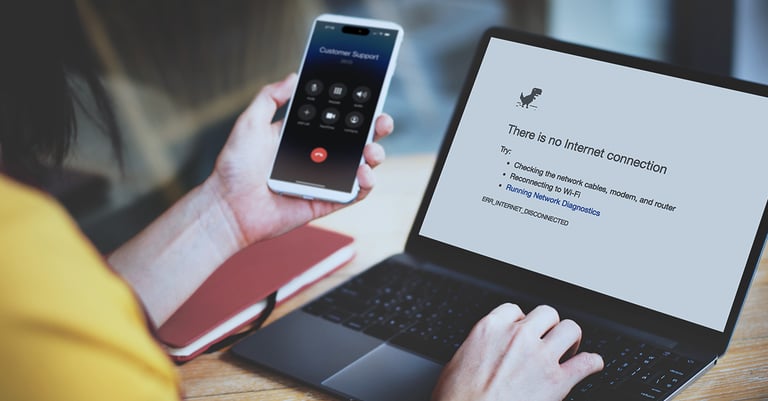What is first contact resolution, and why does it matter?

For any support team, the ultimate goal is to resolve customers’ issues as quickly and accurately as possible. This keeps the customer happy, and helps your support agents resolve more issues in their limited time.
First contact resolution (FCR), sometimes referred to as first call resolution, is a key metric for any ISP support team. It gives you essential insight into your team’s speed and accuracy on support calls, and with the right approach, can help improve the efficiency and quality of your service, too.
First contact resolution measures your team’s resolution rate.
As the name implies, FCR refers to your team’s ability to resolve a customer’s issue the first time they contact you, whether it happens over the phone, chat, or another medium. It usually goes hand in hand with other key metrics, like your average time per customer and the number of customers helped.
For an interaction to count toward your FCR, you’ll need to resolve it completely without the need for any follow-up.
Calculating your FCR is simple. Just divide the number of cases resolved on the first interaction by your total number of cases. Then, multiply this number by 100 to create a percentage.
As a benchmark, a good FCR rate is around 70 to 75%. But the higher the rate, the better!
FCR impacts your customer satisfaction.
Customers want their issues resolved as quickly as possible, so it’s only natural that FCR is a strong indicator of your overall customer satisfaction.
With a strong FCR, your agents end up spending less time on repeat calls with customers. This frees them up to help customers with unique issues, and translates into shorter wait times–which is sure to boost your customer satisfaction rating, too.
A high FCR encourages customer loyalty.
Because a high FCR means higher customer satisfaction, it improves your chances for customer loyalty as well.
After all, a customer with a poor experience likely won’t want to continue to work with you once their contract ends–but a customer with a great experience will.
And loyal customers mean referrals.
For better or for worse, people like to share their customer service experiences.
If customers have a poor experience on their first interaction with your support team, they may not keep it to themselves. They may tell other people to switch providers, or avoid signing up with you in the first place.
On the other hand, when they have a good experience and your team resolves their problem quickly on the first interaction, they may share their great experience with friends and family. They may even encourage others to sign up with you, which creates quality referrals for your business.
Customers are willing to spend more for good customer service.
By using your FCR rate to influence customer satisfaction and loyalty, you may also notice that customers will spend more with you. This happens for a few reasons.
First, as we’ve talked about, positive experiences lead to repeat customers, which means steady income from them as they increase their services.
Second, research has shown that customers will spend up to 18% more for good customer service. This means that if your support team can resolve issues right away, you can likely look into the possibility of a price increase.
A high FCR saves money.
With a good FCR rate, your agents can spend less time talking to each individual customer. This can help reduce the number of overall hours your agents work.
At the very least, this can save your company on overtime costs if agents need to work longer to address call volume. It can also make it easier for your existing staff to maintain call volumes without adding more staff, which can save you new costs in recruitment, salaries, and training.
So how can you improve your FCR?
The first thing you’ll need to improve your FCR is to know what yours is now. That will help you set realistic goals for improvement, so you can track performance against those goals.
Once you have your goals, the key to improving FCR is to ensure that your agents have what they need to resolve customers’ issues quickly and effectively, including training and tools. This should include good diagnostics tools, and can include resources like standard responses for common issues.
Keep in mind that while a high FCR is good, it shouldn’t come at the expense of your other metrics! For example, if agents are spending more time on each call to increase first call resolution, that can create more of an issue than it solves for your team and your customers.
